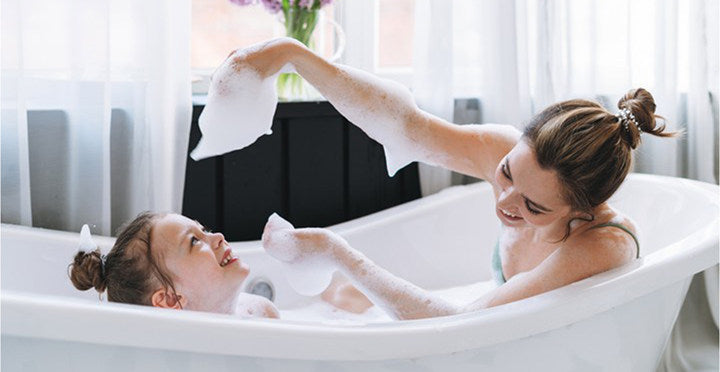5 Pitfalls to Avoid When Choosing a Home Water Filtration System
The World Health Organization has warned that 80% of diseases are related to water pollution. This alarming statistic has raised awareness about the importance of water quality. In the United States, despite a relatively robust municipal water supply system, water quality varies significantly from place to place. From high-rise apartments in major cities to single-family homes in the countryside, the demand for home water filtration systems is on the rise. However, with so many products available on the market, consumers often feel overwhelmed and may easily fall into common pitfalls when making a purchase. Today, let's demystify the process of choosing a home water filtration system and avoid those common traps.
Pitfall 1: The Myth of the "One-Size-Fits-All" Filter

When searching for water filtration products on platforms like Amazon or Home Depot, you'll often see claims like "One filter purifies all contaminants" or "Improves water quality throughout the entire house." Have you ever been tempted by these "one-size-fits-all" filter promises? It seems like a magic solution that can handle any water quality issue.
However, the reality is far from it. Water quality in different regions of the United States varies greatly. In some areas, hard water is a severe problem, with limescale buildup reducing the lifespan of appliances like water heaters and coffee machines. In other areas, industrial pollution leads to excessive levels of heavy metals and chemicals in the water. In such cases, blindly choosing a "one-size-fits-all" filter is like trying to fool yourself.
Pitfall 2: Softener vs. Purifier—Know the Difference

In home water filtration systems, water softeners and water purifiers are two common devices, but they have distinct functions and are suitable for different scenarios. Many consumers often confuse the two when making a purchase, resulting in products that don't meet their actual needs.
The primary function of a water softener is to soften the water. It works through ion exchange, removing calcium and magnesium ions from the water to reduce its hardness. For families that are constantly troubled by limescale, a water softener can effectively protect appliances, extend their lifespan, make clothes softer after washing, and keep skin moisturized after bathing. However, water softeners cannot remove bacteria, viruses, or other harmful substances from the water, so the softened water is not safe for direct consumption.
On the other hand, water purifiers focus on purifying the water. They use various filtration technologies, such as activated carbon filtration and reverse osmosis, to remove impurities and harmful substances, making the water safe to drink. For families that prioritize healthy drinking water, a water purifier is an essential device.
When choosing, you can decide based on your family's actual needs. If your main concern is limescale and you don't have high requirements for drinking water quality, a water softener might be the right choice. If you want safe and healthy drinking water, then a water purifier is the better option.
Pitfall 3: Flow Rate Matters More Than You Think

When selecting a water purifier, many consumers focus only on filtration precision but overlook the crucial parameter of flow rate. Flow rate refers to the amount of water a purifier can produce in 24 hours, measured in gallons (G). Common capacities include 400G, 600G, and 800G. The smaller the flow rate, the slower the water production. For example, a 400G purifier produces about 1 liter of water per minute, taking 1.5 minutes to fill a 1.5-liter kettle. In contrast, an 800G model can do it in just 40 seconds.
For families with multiple members or during peak water usage times (such as early morning routines and cooking), a low-flow-rate purifier may struggle to keep up with demand. The 1000G high-flow-rate water purifier from [Mizudo](https://mizudo.com/) features a dual-outlet design, with separate streams for household water (ultrafiltration) and drinking water (reverse osmosis). This setup not only meets the high-flow needs for tasks like washing vegetables and dishes but also ensures the purity of drinking water. Additionally, its tankless design combined with intelligent flushing technology effectively prevents secondary contamination, ensuring that every drop of water is fresh and healthy.
Pitfall 4: The Hidden Cost of "Cheap" Systems
When purchasing a water filtration system, it's essential not to overlook the long-term maintenance costs. Among the many brands of water filtration systems on the market, there is a significant variation in filter prices and replacement cycles, which can greatly impact overall usage costs. Many brands have expensive filters, often costing hundreds of dollars, with replacement cycles as short as 1 to 2 years. This can place a heavy financial burden on consumers.
To accurately calculate the maintenance cost of a water filtration system, you can use the following formula: Annual Maintenance Cost = (Single Filter Price × Number of Replacements per Year) × Number of Filter Types. For example, a typical water purifier has three filters: a PP cotton filter costing $20 per unit, which needs to be replaced every three months (four times a year); an activated carbon filter costing $30 per unit, which needs to be replaced every six months (twice a year); and an RO membrane costing $150 per unit, which needs to be replaced every two years (0.5 times a year). Plugging these figures into the formula, the calculation is as follows: Annual Maintenance Cost = ($20×4 + $30×2 + $150×0.5) = $80 + $60 + $75 = $215. As you can see, even with seemingly reasonable filter prices, the annual maintenance cost can be quite substantial.
The Mizudo 1000GPD water purifier has innovated in filter configuration by using a high-performance Pre-Composite Filter (PCF) and Reverse Osmosis (RO) filter combination. The RO filter has a lifespan of up to three years, significantly reducing filter replacement costs for consumers. This results in an annual filter replacement cost of only about $90 (PCF + RO/3 = $49.99 + $43.33 = $93.32).
Therefore, when choosing a water filtration system, consumers must be vigilant and prioritize brands with transparent filter prices, convenient replacement processes, and reliable after-sales support. Don't focus solely on the initial purchase price of the device while ignoring the long-term maintenance costs, to avoid the embarrassing situation of being unable to afford the ongoing expenses. Only by considering both device performance and maintenance costs can you truly select a water filtration system that meets your water purification needs and is economically sensible, ensuring long-term water quality safety and cost-effectiveness.
Pitfall 5: Price ≠ Performance
When buying a home water filtration system, some consumers believe that higher prices always mean better quality. However, this is not the case. The quality of a water filtration system does not necessarily correlate with its price. There are some expensive products on the market that may simply have high brand premiums, excessive packaging, or high marketing costs, without necessarily offering better filtration effects or performance.
For example, some high-end water filtration systems may not have particularly innovative filter technology but instead have more aesthetically pleasing designs or unnecessary additional features that drive up the price. These extra features may not be practical for ordinary families and can lead to unnecessary expenses.
Therefore, when making a purchase, consumers should choose products based on their actual needs and budget, rather than blindly pursuing high-priced items. You can evaluate the product's cost-effectiveness by looking at its technical specifications, user reviews, and professional reviews. Opt for products that are certified by authoritative bodies, have good reputations, and are reasonably priced to ensure water safety while avoiding unnecessary financial burdens.
Conclusion
Drinking water safety is crucial for the health of your entire family. Blindly following trends or seeking the cheapest option can both pose risks. It's recommended to conduct a professional water quality test (such as checking your local water quality report on the EPA website) and develop a water purification plan based on your family's actual needs. Only through scientific planning and rational comparison can you truly achieve "water freedom," ensuring that every drop of water meets the highest quality standards.


